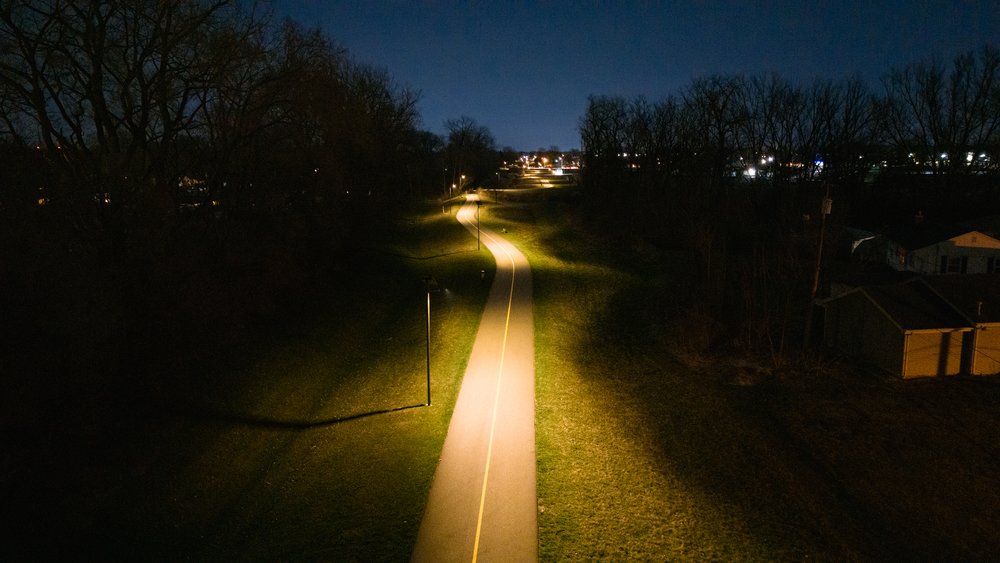Educational 9 December 2024

It’s an exciting time for solar lighting. Over the past decade, LED and solar technology have advanced by leaps and bounds. Financial incentives like the Investment Tax Credit (ITC) have helped drive down customer costs. And growing awareness of renewables in general has led municipalities and businesses to explore more sustainable lighting solutions.
While all this innovation and interest are clearly positive, they have also opened the floodgates to new companies with seemingly equivalent but ultimately inferior products. Many of these companies are known as ‘white labelers,’ meaning they purchase their products from another company—typically an overseas manufacturer—and rebrand them as their own.
There are significant advantages to white labeling. Companies can save on product research, development, and manufacturing, offering their products at a discount relative to solar lighting manufacturers. But there are downsides, too—including that companies have less control over the production process, resulting in lower-quality products with low (or no) support.
Though buying from a cheaper supplier can be tempting, short-term savings often lead to long-term regrets. Here are some things to keep in mind if you’re considering white-labeled solar lighting products.
Brighter isn’t always better, but it’s easy to get that impression by looking at most manufacturers’ spec sheets, which tend to overemphasize and exaggerate the amount of light they emit. Sometimes, you’ll see this expressed as “light output” (e.g., 12,000 lumens); other times as “luminous efficacy” (e.g., 180 LPW). Both are frequently fudged to make them seem brighter than they are.
A common practice is for manufacturers to list the raw output of the LED chip rather than the true output of the complete fixture. Lenses, reflectors, drivers, and dirt diminish output, meaning many solar lights end up being far dimmer than advertised. One way to avoid this is to seek out products that have undergone LM-79, a testing method that captures the output and efficacy of complete luminaires (not components).
Even if you find a white-label product capable of delivering the same ‘real’ lumen output as a solar lighting manufacturer, it doesn’t mean it will provide the same value for money. One of the biggest problems with cheap LEDs is that they don’t manage heat efficiently, causing them to become hotter and hotter before eventually (or, rather, too quickly) burning out.
Quality LEDs—like those used in our systems and made by Tier 1 manufacturers—feature heat sinks, small pieces of metal that dissipate heat and prevent overheating. These heat sinks give heat a path away from the light source, allowing it to stay cool and shine brighter for longer. Many of the LEDs we use have an estimated service life of 100,000+ hours—that’s over 11 years!
Lumens (i.e., light quantity) get lots of attention, but just as, if not more important, is light quality, or the overall appearance or functionality of light. It doesn’t matter if a product can pump out 10,000 lumens in one spot if it’s half that 10 feet away. The effect would be a patchwork of bright and dark areas rather than bright, uniform light across the entire project area.
This is where optics come in, and where cheap LEDs again differ from their higher-quality counterparts. Optics help aim, shape, and focus light where you want it. Whereas many white-label solutions typically have a single optic, higher-quality systems offer a variety to match the diverse needs of outdoor lighting applications. Quality optics also optimize efficiency, reduce light pollution, and meet relevant IES Standards.
Solar lights with quality components shouldn’t need much maintenance. But unexpected things can and do happen, so it’s wise to choose products that use readily available components—something white-label products typically do not.
Let’s say your system’s LED driver fails. This is a common issue with low-quality solar lighting products, resulting from being under or overdriven (i.e., delivering too much or too little current to the light). If it’s a quality fixture, you should be able to service the driver or swap in a replacement. However, if it’s a white-label product, it’s highly unlikely you’ll be able to fix or replace the broken part, meaning you may have to throw away the entire fixture.
Warranties are critical for protecting your investment and providing peace of mind, but they aren’t always what they seem. Many white-label solar lighting companies have only been in business for 2-5 years, so when they advertise 10-year warranties, it begs the question, will they even be around that long? And if they are, what kind of support will they provide, given that they didn’t make the product?
The best way to avoid being left in the dark is to buy from a solar lighting company with a long, comprehensive warranty and a history to back it up. Sol has been in the industry for 35 years and offers a 10-year warranty on all its systems, including the battery—something no other solar lighting company can match.
Even though many customers see the cost-saving benefits of solar lighting over the long term, they still want to minimize their upfront expense. This is understandable, but choosing cheaper, white-labeled products often comes with unforeseen costs and problems. Sol’s solutions provide superior, long-lasting illumination, use brand-name components, and are backed by an industry-leading warranty and reputation of supporting our products and customers.
Do you have a solar lighting project you’d like to discuss? Our team would love to hear from you.
